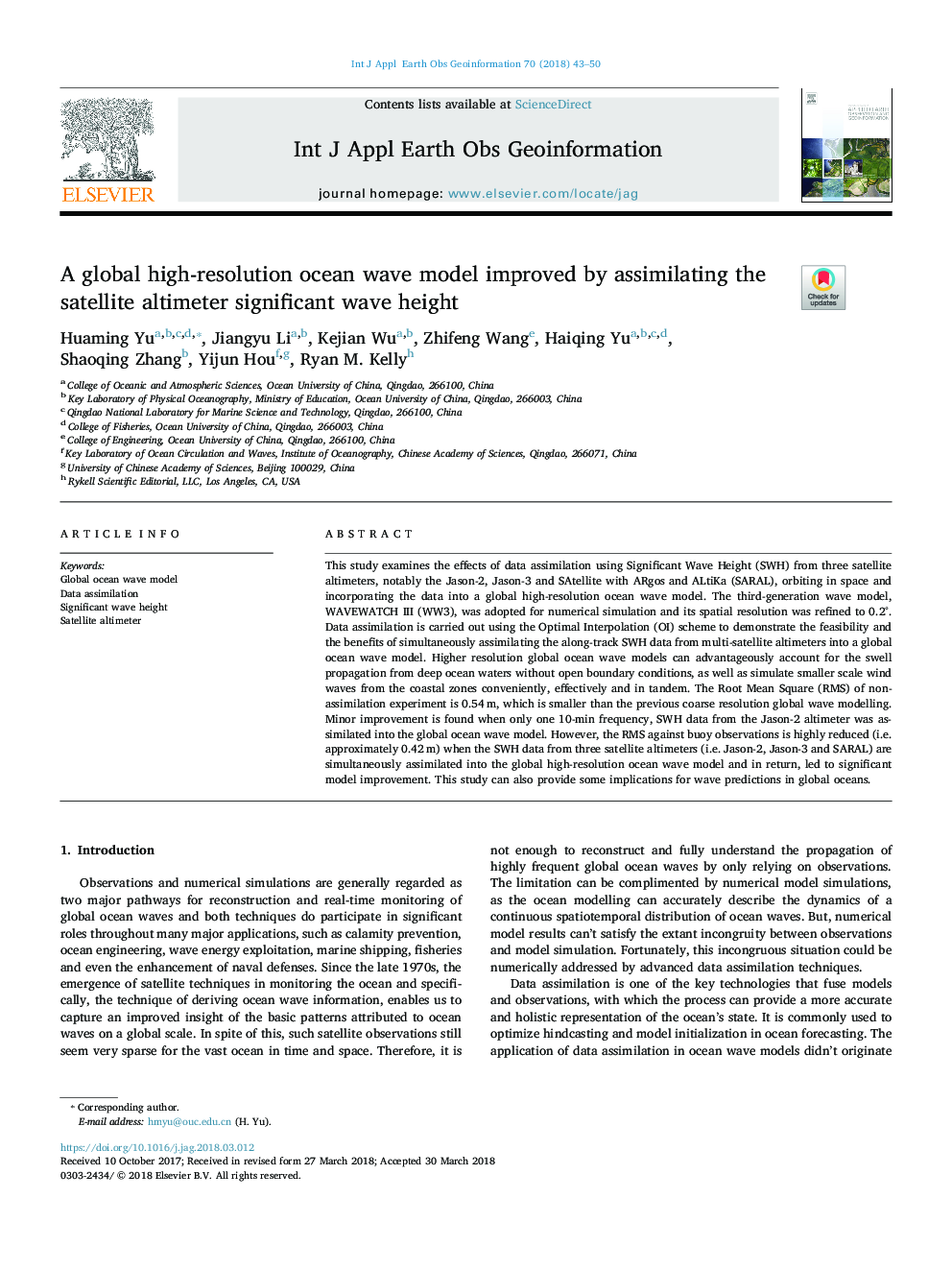| Article ID | Journal | Published Year | Pages | File Type |
|---|---|---|---|---|
| 8867844 | International Journal of Applied Earth Observation and Geoinformation | 2018 | 8 Pages |
Abstract
This study examines the effects of data assimilation using Significant Wave Height (SWH) from three satellite altimeters, notably the Jason-2, Jason-3 and SAtellite with ARgos and ALtiKa (SARAL), orbiting in space and incorporating the data into a global high-resolution ocean wave model. The third-generation wave model, WAVEWATCH III (WW3), was adopted for numerical simulation and its spatial resolution was refined to 0.2°. Data assimilation is carried out using the Optimal Interpolation (OI) scheme to demonstrate the feasibility and the benefits of simultaneously assimilating the along-track SWH data from multi-satellite altimeters into a global ocean wave model. Higher resolution global ocean wave models can advantageously account for the swell propagation from deep ocean waters without open boundary conditions, as well as simulate smaller scale wind waves from the coastal zones conveniently, effectively and in tandem. The Root Mean Square (RMS) of non-assimilation experiment is 0.54â¯m, which is smaller than the previous coarse resolution global wave modelling. Minor improvement is found when only one 10-min frequency, SWH data from the Jason-2 altimeter was assimilated into the global ocean wave model. However, the RMS against buoy observations is highly reduced (i.e. approximately 0.42â¯m) when the SWH data from three satellite altimeters (i.e. Jason-2, Jason-3 and SARAL) are simultaneously assimilated into the global high-resolution ocean wave model and in return, led to significant model improvement. This study can also provide some implications for wave predictions in global oceans.
Related Topics
Physical Sciences and Engineering
Earth and Planetary Sciences
Computers in Earth Sciences
Authors
Huaming Yu, Jiangyu Li, Kejian Wu, Zhifeng Wang, Haiqing Yu, Shaoqing Zhang, Yijun Hou, Ryan M. Kelly,
